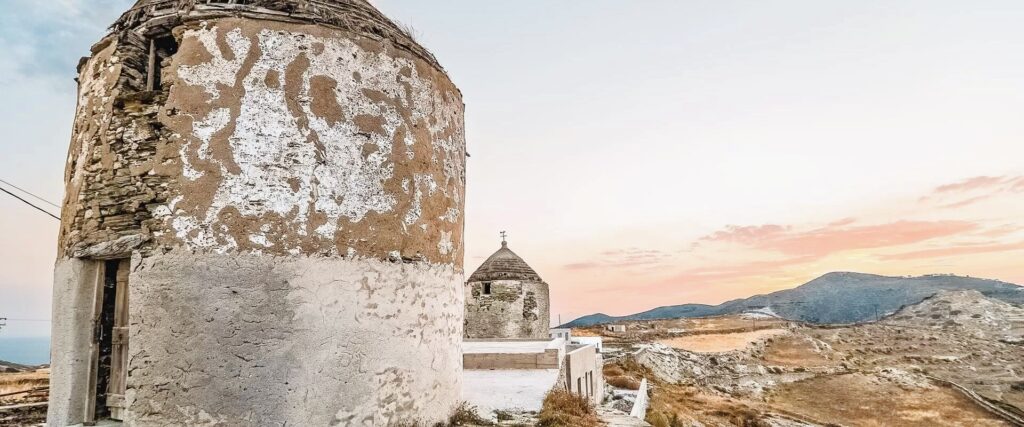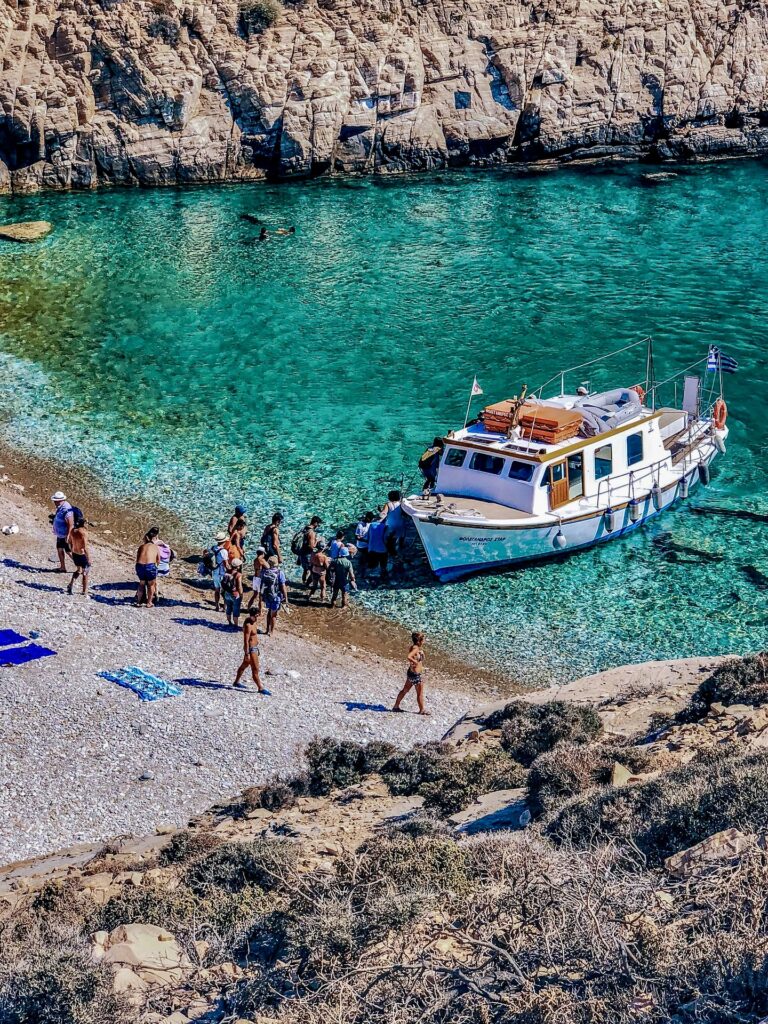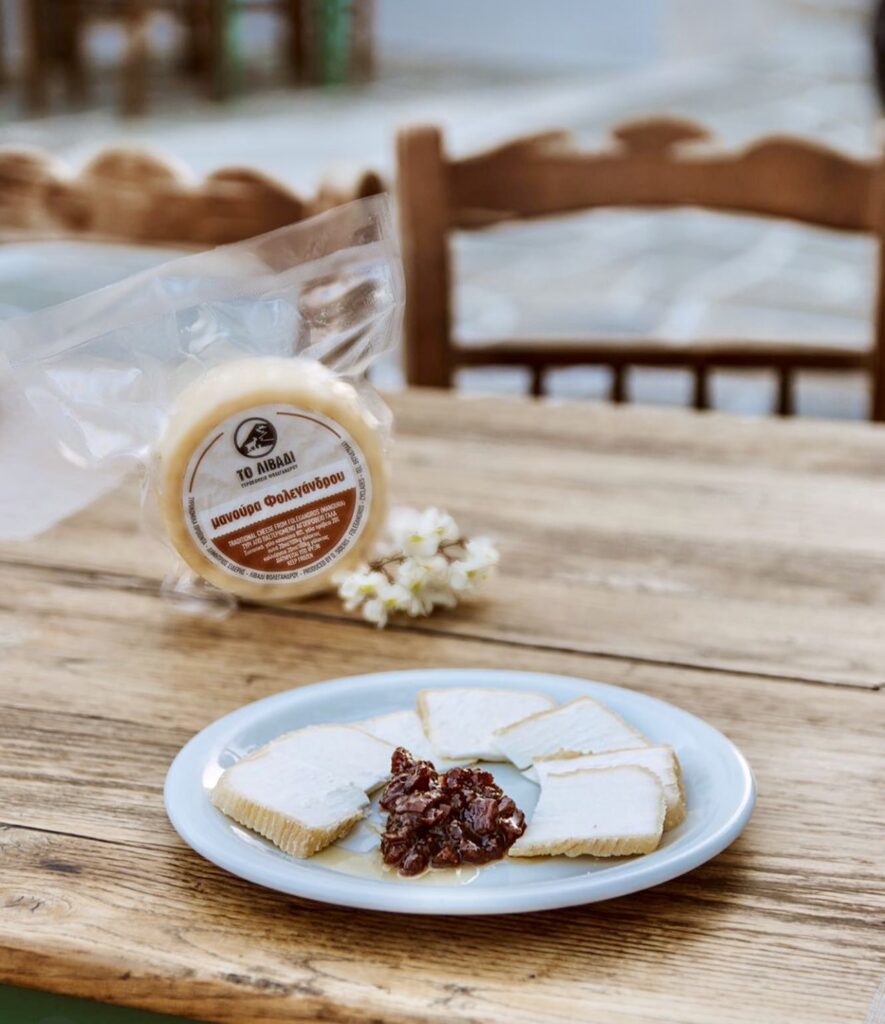Chic, in Chora, Folegandros, harmoniously balances tradition, handmade products and modern taste trends, offering authentic Aegean flavors.
On a scenic trip to Thessaloniki, where the beauties of the Greek countryside alternate as the main characters of a classic movie, we met Dimitris Sideris, owner of the restaurant The Chic.

Born and raised in Folegandros, a unique example of a Cycladic island with squares shaping the centre of Chora, he opened up The Chic, an enviable dining area where flavors beyond the ordinary are served where classic dishes are enriched with ethnic elements along with local raw ingredients such as goat, lamb , pumpkin, cheese, capers, olives and legumes.
The healthy Mediterranean diet at its peak since the dishes at Chic are designed in such a way to be attractive to the eye without depriving the joy of absolute tastiness.



Don’t miss to try the delicious young goat with lemon sauce and the aubergines stuffed with lentils, rice and yogurt sauce.
Folegandros is a warm embrace, source and spontaneous elements of Greek hospitality. Between the welcoming arrival and farewell, mingle people who come and return over the years, forging bonds with the region and its inhabitants.

The incomparable white of its authentic Cycladic architectural houses is accentuated by the colourful doors and windows, while its cobbled streets and contiguous squares with large plane trees invite the visitor to rest under their thick shade.
The Chora of the island, built 200 meters above sea level, stretches in and around the medieval Castle that stands proudly on the edge of the cliff. The blooming bougainvillea that emerge from the balconies of the houses of the Castle combined with the goddess of the vast Aegean make the sight unique.
The mild tourist development of the last two decades has allowed the island to preserve its character and physiognomy intact. At the same time, however, modern infrastructures and organized tourist services were developed.

Traditional dish of Folegandros is matsata, local spaghetti usually served with braised rooster, braised goat or soutzoukaki, kalasouna or onion, as it is often called, as well as karpouzenia, a dessert made from watermelon, honey and sesame ( pasteli) baked in the oven. In Folegandros, there is also a local cheese factory with various cheeses such as souroto (fresh goat’s cheese), sour cheese, anthotiro and “sketo” cheese, a hard cheese that ideally accompanies matsata.

Natural and religious monuments of Folegandros
The Church of the Dormition of the Virgin is one of the first things one sees upon arriving in Chora. All-white, with the cobbled street that leads to it rises on the northeast side of the village on an impressive rock.

This is the most important church of Folegandros, dedicated to the Dormition of the Virgin, while it is assumed that it was built on the site of an ancient sanctuary. In the courtyard and inside the Temple you will see inlaid ancient inscriptions and statue bases.
According to tradition, the miraculous, silver-plated Byzantine icon of the Virgin Mary that is kept in the church is connected with pirate stories and legends of Folegandros, while according to the old custom of the island, at Easter, the icon is taken around all the houses of the island.
Visit the picturesque village of Ano Mera, a traditional rural settlement of the 19th century, and especially the Folklore Museum (open in the summer months, from 17:00 – 20:00pm) where you will have the opportunity to see the typical rural household of Folegandros as it operated until the middle of the 20th century. The museum was founded by the cultural association “Folegandros“.
Chrysospilia is a separate natural monument with special speleological and archaeological interest. It is located about 30 meters above the sea on the rocky coast below the monastery of Panagia and is decorated with countless stalactites and stalagmites.
What literally makes it unique worldwide – beyond the Roman cisterns and the multitude of shells that have been found inside – is the multitude of ancient male Greek names that cover its walls and ceiling, which dates back to the 4th century B.C. Nikagoras, Themistocles, Kleon, Callimachus, Pythagoras, Lysikrates are just some of the names inscribed, which seem to belong to teenagers as it is assumed that the visit to the cave had a cultic character and took place in the context of a coming-of-age ceremony.




